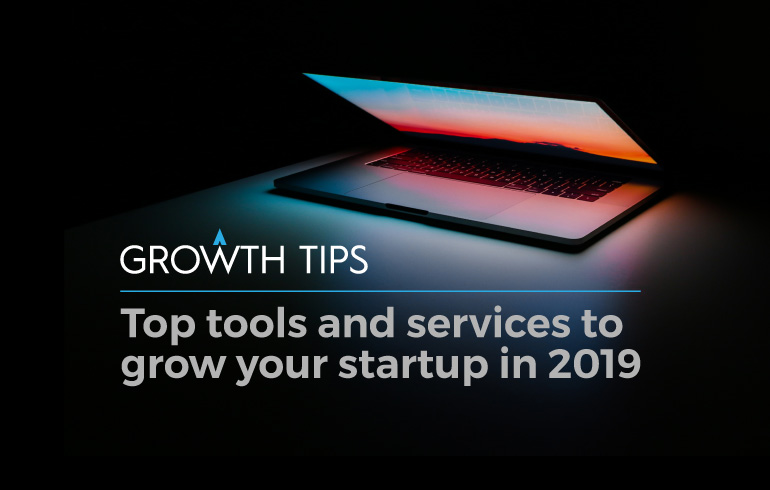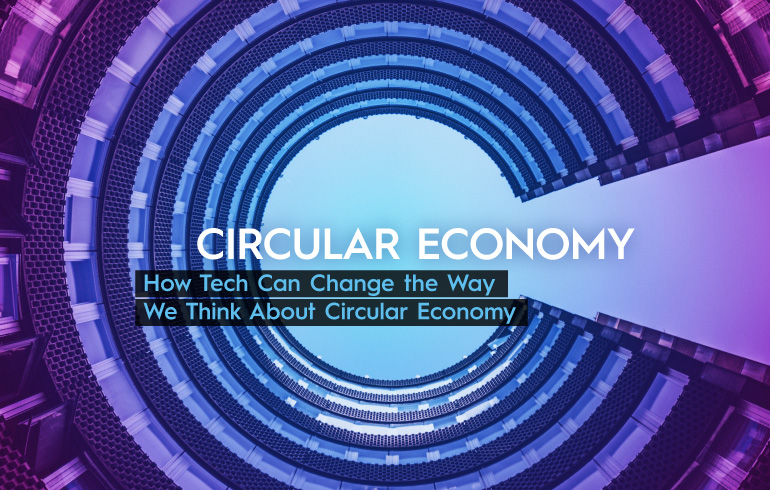
by silvia | Mar 18, 2019 | Corporates, Investors, Startups, Uncategorized
Smart Open Lisboa (SOL) is an ambitious initiative that aims to involve startups and their innovative solutions in contributing towards a better, smarter and more efficient city. Its third edition gains steam, as the Bootcamp phase of SOL Housing kicks off today in Lisbon. The Housing vertical is dedicated exclusively to solutions for smart cities focused on the value chain of the commercial and residential real estate.
The Bootcamp will happen between 18 and 22 of March, in Beta-i’s headquarters and it brings 19 selected startups from the applicants batch to meet the program partners.
The chosen startups are Alfredo AI, Bead, Buildtoo, Doinn, Enerbrain, Heptasense, Howz, idatase,Lumen Cache, MClimate, Meazon, Mycroft Mind, Nice Visions, Nudge Portugal, Onegrid, Parquery, Proximi.io, Trustbill e WearHealth Team.
You can read more about them here.
Started in 2016, Smart Open Lisboa, now in the SOL Housing vertical, is turning the city of Lisbon into a laboratory of experimentation, with utilities and companies working with startups to solve problems and make the citizens’ lives easier.
The program is backed by the city hall (CML) and it partners up with several major players in the market. Together they are making Lisbon an entrepreneurial city, making an investment into upgrading city life.
Read about the partners of the program here.
[wonderplugin_carousel id=”5″]

by silvia | Mar 15, 2019 | Corporates, Investors, Startups, Uncategorized
When starting your own business or growing your own startup KPIs tracking is one of the most important tools you can use to keep your growth on track and measure the viability of your business. We’ll walk you through the traditional and news ways of doing it.
CAC:LTV Ratio
Traditionally, the CAC:LTV Ratio is the most used KPI. This important KPI measures the sustainability of your company. This ratio can be broken down into two metrics:
-
CAC: Client Acquisition Cost
In a nutshell, this metric indicates how much money your company spends to acquire a new single customer (through marketing, advertising, sales, including salaries and overhead).

Essentially, the lowest the CAC, the better, so a high CAC can mean flaws in your sales process, and a growing CAC can be a sign of trouble (as your CAC is expected to reduce with time as you build your brand), but it depends on the situation: it’s not a problem if you’ve introduced a new product or service with much higher margins. Essentially, following your CAC can help you optimize your return on investment.
- LTV: Customer Lifetime Value
This metric measures how long a customer or user remains a client, on average, determining how much business value will derive from each customer.

Combining these two metrics into the CAC:LTV ratio, you get an indicator of the sustainability of a company. For a business to be successful, it must be able to drive more income from its customers, than the money it invests to bring them onboard, and to actually deliver the product/service the customer is receiving.

Although the CAC:LTV ratio has been traditionally used by investors and venture capitalists as a measure of growth and viability, there’s a new more viable KPI that was introduced by Social Capital and is used by Venture City and also by our own team in Lisbon Challenge by Beta-i – the Quick Ratio.
The Quick Ratio
The Quick Ratio is a shortcut metric to define where the product stands in terms of growth. It combines growth, retention and churn into one number that describes how efficiently your product is growing.

Essentially it’s the ratio between the new and resurrected clients over the clients lost in that month. Simply, if a Quick Ratio is >1 the number of users is growing and if it is <1 the number of users is declining.
It’s important to always see the number of lost clients in relation to the acquisition and retention of clients because it can tell you important information to base your next steps on. A company with a high retention rate doesn’t need to make a big effort in sales to keep growing steadily (as opposed to a company with a lower retention rate that would need a bigger client acquisition to keep growing at the same rate).

provided by The Venture City
A lower retention rate means you need to put efforts into bettering your product, and a low acquisition rate might mean you need to rethink your marketing strategy.
The only way to have a high ratio is to keep both acquisition and retention high – that means your product has a healthy life.
The advantage of using the quick ratio is that you can apply it for your product even when you don’t have paying customers yet, or apply it to several parts of the business in order to understand its challenges.
As Eduardo Sette Camara, Lisbon Challenge by Beta-i’s Head of Acceleration put it:
In a gross simplification, sustainable revenue and growth is the end result of capturing value through a great product/service delivery. But if you want to go to the core of what drives that growth, slice up the problem and variables, and really understand what sticks, applying the quick ratio calculation to more and more granular information can deliver those insights. It’s about trying to understand cause and effect.
This is why most VCs are looking into this metric as a way of evaluating the companies they want to invest in – and so should you.

by silvia | Mar 14, 2019 | Startups, Uncategorized
When your startup is looking for investment there are a lot of things you should consider. We break down the steps to take to meet investors the right way.
1. Look for the Right Investors
This is easily the most important part of the process. If all you need is money, then a bank is the easiest way to go. If you’re looking for an investor that means you’re looking for a long-term business partner. When looking for investors, take the time to consider what kind of investor you are looking for:
- Sector: Are you looking for an investor that focuses on your particular sector of business?
- Investment patterns: What type of investments does the investor usually make? Seed, or series A/B? Does it match the phase your startup is in, or what you’re looking in the future?
- Region: Are you a global startup, or are you focusing on a region? Is the investor also focused on a particular region?
- Are you looking for someone with experience and contacts in a particular sector that you want to reach?
This will help you have a better understanding of what kind of investor you’ll need and how do you know if you’re a match.
2. Do some healthy stalking
After you considered and defined all the point in the previous step, it’s time to look for people who fit your criteria and preferences. Don’t be lazy and do your research! Do not approach investors randomly – research their past ventures and investment portfolio, and try to understand if they are a good fit with your company.
Approach leaders and connections within the sector you’re working on and ask for recommendations.
3. Network
This one is pretty simple – to meet investors you need to be where they are! Join the same events, participate in roundtables and join conversations about the industry.
Certain events, like the Lisbon Investment Summit, happening in Lisbon on June 5-6th, are the perfect setting to join discussions and meet the right people.
Don’t forget the 6 degrees of separation – meet as many people as you can and engage in conversations with them. You might meet someone who can introduce you to an investor that might be a great match.
4. Be considerate of the person
Most investors won’t take cold emails, so make sure to get an introduction within your network. Also, don’t spring your business plan on them – take the time to get to know them and understand what they usually work on and what are they looking for at the time. Make you sure you are bringing something valuable to the table.
5. Build a relationship
Let’s be real: no one invests in a complete stranger. You have to understand that an investor is investing as much in you as in the business. So make sure to let them know you are a reliable person, who accomplishes what he sets out to do. After initial contact, if there’s interest, keep them posted on your work and the results of the business.
Keep joining the conversations the sector is having and show that you are an expert in what you do.
In the end, it’s important to realize that there must be a match between the interests and goals of the entrepreneur and the investor. Don’t be shy to say what you want from them (mentorship? introductions?), and what you can offer in return. None of you should ask for something they’re not willing to bring themselves – it should be an equal partnership that is mutually beneficial.

by helder | Feb 22, 2019 | Startups, Uncategorized
Launching a startup isn’t just about developing a website or an app and taking it online. There are a lot of procedures and operational processes to take care of, in order to be able to scale and succeed.
There are many tools and services you can use, not only to help minimize the costs, but also to save time, optimize processes, and make the operation smart and smooth. From project management to data and analytics, for every crucial element of running and growing a startup, there’s a tool.
So, we have curated this list of the most useful tools available. Since one of the concerns of every startup is to keep the costs at a minimum, all the tools and services listed are free to start. Using these tools and services can help startups grow seamless for years.
Google Marketing Platform
Google Marketing Platform consolidates a set of tools for better collaboration, data sharing and analytics. It consists of Analytics, Data Studio, Tag Manager and Optimize.
Google Analytics alone is a winner, but when integrated with Tag Manager, Data Studio and Optimize it turns into a monster of seamless data and analytics processes:
- Set Analytics to collect data;
- Use Data Studio to build dashboards to analyze and process that data;
- Use Tag Manager to manage all your tags without editing code;
- Take advantage of Optimize to engage your visitors, create personalized experiences and test what works best.
Killer feature: The seamless integration between the four features makes it easy to collect and visualize visits and traffic data, and to create custom funnels and metrics. Analyze your audience’s behavior to understand their flow and segment them to create a target and target-specific ads.
Hubspot
Every market effort your startups makes, from emails and newsletters to blog posts and social media, should be feeding leads to your marketing funnel – and each of those should be helping you grow your customer base. That’s where Hubspot enters.
HubSpot is a software platform that helps you generate leads, close deals, manage your pipeline, and delight your customers, offering a suite of products for customer relationship management (CRM), content management (CMS), marketing, sales, and customer service.
Killer feature: The possibility to keep track of everything from your contacts and prospects, to blog posts, to email and social media campaigns, to leads and deals, on the same platform.
Trello
Trello is a team collaboration tool that lets you organize anything and everything to keep your projects on track.
Trello allows you to capture different “cards” and organize them into lists and boards You can share entire boards with your team and assign specific cards to teammates. Instead of sending out emails to give updates, everyone can add comments directly to a card, meaning that communication stays tied to a task and it’s not missed by team members.
Killer feature: Trello can be adapted to fit your workflow or your team. Use it to plan complex projects or to plan what you’re eating for dinner – its beauty is in its flexibility.
Slack
Slack is a platform for team communication: everything in one place, instantly searchable, available wherever you go. Offering instant messaging, document sharing and knowledge search for modern teams, Slack is replacing email and IM and everything between.
Killer Feature: Slack offers a simple way to talk in groups or in private, but the integrations are what makes it indispensable. Drag in a file, share a Google Drive document, YouTube video, Tweet and much more, and Slack will show a preview right along in your chats. You can integrate other useful tools other apps, like Zoom (for video chats) or giphy (for fun!).
Airtable
Airtable is a fast and flexible way to create tables to keep track of anything, from sales leads to vacation planning to inventory management. You can organize anything with Airtable, a modern database created for everyone.
Databases are the beating heart of almost every modern business. CRMs, project management tools, content management systems, accounting tools, and more often than not a database with a form to enter data and ways to view it. If you already have an idea for the database you need, it’s simple to turn it into a working tool for your team in Airtable.
Killer feature: It’s easy enough for everyone to use it without training but powerful enough to organize any amount of data you need.
Dropbox
Dropbox lets you store your files online, sync them to all your devices, and share them easily. Share a folder inside your team’s Dropbox – anyone can add files and they’ll magically stay synced for everyone.
Killer feature: The new Dropbox Paper app also lets you collaborate on texts. It’s an online writing app where everyone can write together in real time, add comments and replies for feedback, and collaborate without having to make sure everyone has the same version of Word.
Canva
Canva gives businesses and professionals a very simple design platform that enables them to create amazing and professional quality graphic designs.
It’s a user-friendly, reliable design tool that makes it easy to take an idea and turn it into a stunning design. With a wide range of available formats – from print to social media – Canva allows anyone without a design background to not be hindered by ugly graphics.
Killer feature: The simple drag-and-drop design tool and a vast collection of over 1 million photographs, graphics, and fonts, can turn anyone into a decent designer.
Buffer
Manage your social media marketing together with Buffer‘s tools to schedule posts, analyze performance, and publish in half-dozen social networks from just one app.
It’s a scheduling tool to keep your social media profiles up-to-date without you posting all the time. Connect your Twitter, Facebook, LinkedIn, Instagram, and Pinterest accounts, set a publishing schedule for when you want to share new posts, then add a queue of things to post. Buffer will do the rest, sharing your posts and keeping track of how they do automatically.
Killer feature: Automate your social media management, by sharing scheduled posts to multiple social media accounts from one place and viewing engagement and activity analytics.
Zapier
Zapier is an online platform that connects various apps together to automate workflows easily for business and productivity.
With its powerful technology, users can move information automatically between web apps, so they can focus on the more important work at hand. The ultimate aim is to empower businesses to create automatic processes and systems.
Killer feature: Automatic storing of files via the workflows – no more searching for a document in your emails.
In case we might have missed any useful tool and service your startup uses, feel free to mention it in the comment section below to make this list more resourceful for other entrepreneurs and readers.
And to stay up to date on tips and events: subscribe to our newsletter.

by silvia | Feb 21, 2019 | Corporates, Investors, Startups, Uncategorized
The circular economy has been gaining momentum in recent years. The urgency created by the impact of consumerism on the planet’s environment has created urgency in governments and consumers to support and make the necessary infrastructure available.
So far, the development of tech has been focused on supporting and improving the traditional solutions that already exist and enable circular economy: waste collection, sorting, and recycling.
However, new developments and advanced technologies can and will bring the next level of innovative solutions to enable an (almost) complete circular economy.
Augmented Reality
Augmented reality can be useful to in several levels of the circle. This tech can help several activities performed become more efficient, reducing its costs. It’s also useful in the prototyping processes by visualizing design prototypes in 3D, and testing and redesigning manufacturing processes, reducing or eliminating entirely the use of some raw materials.
In real life:
Scope, a Canadian firm specializing in AR solutions for industry, has developed a software tool called WorkLink that can transform traditional paper-based work instructions into Smart instructions, It uses animated, intuitive, 3D computer-generated imagery that overlays on top of the real world.
Internet of Things
Internet of Things (IoT) systems can be an enabler of circularity, offering assistance in the process of resource recovery. Smart objects can give info about their location, status or need for upgrade. IoT can also be used in predictive maintenance (determining the condition of in-service equipment or machinery in order to predict when maintenance/servicing should be performed) to maximize product life span and reduce costs.
In real life:
San Francisco and London have installed solar-powered automated waste bins that alert local authorities to when they are full; creating ideal routes for trash collection and reducing operational costs by 70 percent.
Big Data
Big data play a big role in making industries and supply chains more efficient. It can be very useful for route optimizations, reducing risk, streamlining manufacturing and making supply chains more transparent, by enabling businesses to make decisions based on accurate data-driven insights.
In real life:
DHL has a Big Data Business Platform that supports all its activities. It uses data collected by sensors, on top of getting data from the financial industry, public authorities, retailers, SMEs, and its own research. DHL uses the technology for route optimization, strategic network planning, operational capacity planning, risk evaluation and resilience planning, customer loyalty management, and environmental intelligence (statistics on pollution, traffic density, noise, parking spot utilization, etc.)
Platform Economy
Platform Economy refers to digital marketplaces. Amazon, Alibaba, etc, already changed the way consumers buy industrial products. It’s a concept that can be applied to help implement what is called ”Industrial Ecology” – the concept that the waste of one industry can be the input of another one.
In real life:
Organix an online marketplace for organic waste. It links organic waste producers with biogas operators to facilitate energy recovery from such waste.
Product as a Service
This is a business model in which manufacturers retain control of the product throughout their lifecycles – instead of selling the products, they lease them to costumers. This means that the responsibility of disposing of the product at the end of its lifecycle shifts from the consumer to the manufacturer. It also opens the possibility of recycling or refurbishing the product to give it a longer life span.
In real life:
DriveNow is a sharing service that offers a fleet of the latest BMW and Mini vehicle models. Users can locate a car and unlock it using an app, use it, then park it again.
Blockchain
Famous for its use in Fintech, Blockchain represents trust in transactions, since there is no third-party intervention. It can be leveraged by the circular economy too: blockchain technology can be used to make supply chains more transparent by tracking products from the manufacturers to the shelf. This access to information can help customers be informed about how the products were made and shipped, empowering them to make environmentally friendly decisions.
In real life:
Provenance uses blockchain to make supply chains more transparent, It builds a traceability system for materials and products. It gives consumers information about suppliers by tracing the origins and histories of products.
Upcycling
Circular Economy is all about closing the loop, but unfortunately, not everything can be recycled back to a raw material state to be re-used. Upcycling enables creative re-use of products for different purposes (without breaking them down). Companies can find alternative inputs for their products, and customers can find ways to re-use their products once they’ve reached the end of their lifecycles.
In Real Life:
Samsung has introduced Galaxy Upcycling, which is a program that enables the embedding of IoT in old smartphones to be used in households. On their website, they suggest ideas for using the phones, and they offer the software and the hardware (sensors). For example, the device could be used to monitor fish tasks, check conditions, and give food to fish while the owner is away.










